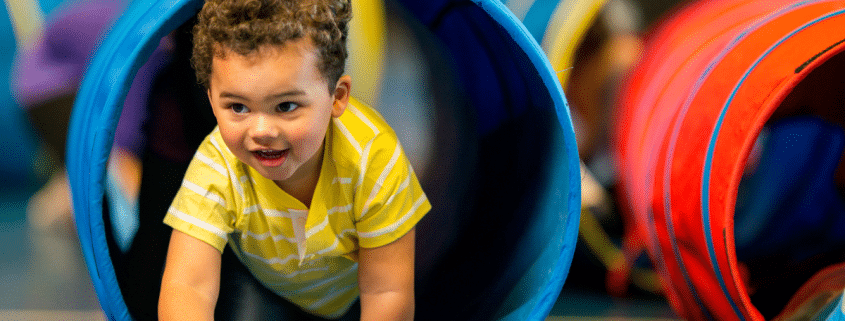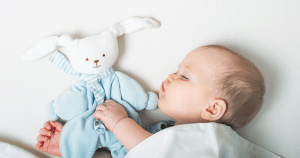When do toddlers stop napping?
All babies need to nap, and some may need to nap more than others. As your baby grows, you’ll notice them napping less and less. In this blog, we’re answering the question, when do toddlers stop napping?
This blog includes:
- Why do babies need to nap?
- When do toddlers drop naps?
- What age to stop naps
- Signs that your toddler is ready to drop a nap
- Signs that your baby is tired and needs to nap
- What to do if your toddler won’t nap
- Building a sleep routine
Why do babies need to nap?
Babies need to nap as it helps them to develop and grow. Sleeping is essential for their health as it is for adults.
Every baby is different. Some children may prefer having fewer naps for longer periods. In contrast, other children may prefer more frequent, shorter naps. You’ll be able to identify what your baby likes by their mood.
As a new parent, it’s normal to worry about your child. How much sleep they get might be something that you often think about.
In your child’s early years, your health visitor is the best person to talk to. You can discuss any concerns with them.

When do toddlers drop naps?
As a newborn, your baby will likely sleep for more hours than they are awake. Newborns typically only have wake windows of around 45 minutes before it’s nap time again. Read our blog on wake windows by age.
When your baby gets older, you’ll notice them being able to stay awake for longer and develop their skills. This is such an exciting time! Babies becomes toddlers around the age of 1 year, when of course they start to walk or ‘toddle’, until around 3 years of age.
At one year, your baby will likely still have two naps. They will need between 12 and 14 hours sleep per day, this includes night time sleep and day time naps. Most 1 year olds still have 2 naps a day, one shorter nap in the morning and a longer after lunch nap, although some will have dropped the morning nap by then.
Between 15 and 18 months old, most babies transition to just one daytime nap per day, which usually happens after lunch. Most 2 year olds will still need a nap every day, but by the age of 3 you might find that your little one skips their nap every now and then, or drops it altogether. Most children stop napping altogether by the time they start school.
What age to stop naps
Most babies will show signs of needing to drop their naps and toddlers make it pretty clear when they don’t need a nap anymore! Be guided by your baby and what their sleep needs are.
Some babies will stop napping at around two years of age, while others may continue until they are three or four. It’s important to make sure your toddler gets the daytime sleep they need, as this will help them sleep well at night. Overtired children tend to struggle with night time sleep and might wake early.
Read our blog on an overtired newborn.

Signs that your toddler is ready to drop a nap
The first and clearest sign that a toddler is ready to drop their nap is that they resist falling asleep, often this will happen on a day out, your toddler will stay awake all day, or just have a very short nap in the buggy. You’ll probably have to bring bedtime forwards if they do this. Staying awake all day may also lead to a late afternoon nap, make sure this is a short Power Nap so that your toddler is still tired at bedtime.
** Cate’s top tip- a Power Nap or bridging nap is the best way to cope with your toddler dropping their day nap. Rather than going all day without a nap you give them a short nap late in the day so that theyre not over tired at bedtime. **
Difficulty falling asleep at night
This is where it gets tricky! Too much day sleep or too little can cause difficulties at bedtime.
If your toddler is having a long day nap they may not be ready to go to sleep at bedtime. We all know that if we have a long, late afternoon nap we’re unlikely to be ready for bed a few hours later. However tired you were before the nap your body just isn’t ready for more sleep. It’s the same with toddlers. So you might need to reduce the length of their nap if they’re bouncing off the walls at bedtime after a long afternoon nap.
According to Dr. Florencia Segura, MD FAAP, “Refusing to go to bed at their normal bedtime is a sign that they need to drop a nap, because they’re simply not tired enough after taking one.”
If this is happening in your house try giving them a Power Nap, late afternoon is a good time for this and wake them after 15-30 minutes. This will help prevent over-tiredness at bedtime.
Find out more about your baby fighting sleep.
Struggling with daytime naps
Some babies simply start to struggle with napping.
“The toddler who is potentially done napping will be at his or her baseline around the time the nap would usually approach. They will not be ‘revving up’ nor having a meltdown. They will be playing, eating, learning, etc. and no different than they are at any other part of the day,” says Innessa Donskoy, a pediatric sleep medicine doctor at Advocate Children’s Hospital.
You may also find that your little one may “stay happy and composed without the nap”, continues Donskoy.
If this is happening regularly, it could be time to drop a nap. Monitor your baby’s mood during a nap transition to see if it is actually beneficial. Aim for a couple of no-nap days in the week and see how it affects night sleep.
Frequently waking up early
If your baby wakes up and is no longer tired, it’s unlikely that they’ll go back to sleep. In babies that are having too much sleep, this can mean waking up very early. If your baby starts to wake early, you could reduce their naps slowly to see if it helps.
Your baby may not be ready to stop napping completely, so instead, focus on less sleep. This can help your baby to fall asleep at bedtime.
Not showing signs of tiredness for daytime sleep
“You know when your baby is tired, and if they aren’t showing you, then they probably aren’t.” says Cate Hope, OCN qualified sleep consultant. There could be various reasons for this. Your baby might continue with an activity happily and skip their nap.
Again, keep an eye on your baby’s mood when they skip nap time. If they handle it well for a short while, it may be a sign that it’s time to stop.

Signs that your baby is tired and needs to nap
The last thing you want is an overtired toddler or baby. With that in mind, it’s important to look out for their sleep cues and let them nap when needed.
- Toddler becomes grumpy
- Increased clinginess
- Becoming bored
- Rubbing eyes
- Becoming fussy
If you notice these signs when dropping a nap, it might be a good idea to introduce a shorter afternoon nap again. This can help to improve your baby’s mood.
Don’t forget that there’s no pressure on when your baby should stop napping altogether. As a parent, it’s up to you to work with your child and identify the best steps for their sleep schedule.
What to do if your toddler won’t nap
If your child is skipping naps due to not being tired, it’s not the end of the world. It may be just that particular day, or they may be ready to stop napping.
Instead of struggling to get them to sleep, why not give them some time to enjoy quiet activities? Reading a book in a quiet environment or even working on a small jigsaw can help them to relax. This will help them to develop their fine motor skills. Replacing nap time with quiet time can help your baby fall asleep easily for nighttime sleep.

Building a sleep routine
With regressions and growing up, it can feel like your child’s sleep is constantly changing, and it probably is. Here are some ways to build a great sleep routine.
- Bath time, followed by pyjamas
- Feeding
- Reading a book, singing a song or allowing the baby to play quietly
- Cuddle
- Early bedtime
During the bedtime routine, be sure to keep noise to a minimum. This will help your child relax and teach them that quiet time is bedtime. A bedtime routine can definitely help your baby to fall asleep and get a good night time sleep.
So, there’s no exact age when your toddler needs to stop napping. It’s all about what works best for them. Don’t put pressure on a sleep routine – remember that every baby is different.
We hope this blog has been helpful and answered the question, when do toddlers stop napping? Contact your doctor if you are concerned about your child’s sleep.
Sources:
Pampers, At What Age Do Toddlers Stop Napping?, March 2022
Pajama Program, 5 Signs Your Toddler Should Stop Napping, April 2020
Sleep Foundation, When Should Kids Stop Napping?, September 2023



















